Spending 2 days in Rome for my 28th birthday was a dream come true. After four years of living and traveling in Europe, I finally made it to the Eternal City. Rome, with its 2,500 years of history, is filled with ancient wonders, mouth-watering food, and endless things to explore.
This guide will help you make the most of your short trip, even if you only have 48 hours. Whether it’s your first time in Rome or you’re a frequent visitor, I’ll walk you through everything you need to know. From must-see landmarks to hidden gems and local eats, your Roman weekend will be unforgettable.
Are 2 Days Enough Time in Rome?
Let’s be honest—2 days in Rome? Not nearly enough to do it justice. But for most of us, time and vacation days are limited, so here’s the good news: you can still make the most out of your weekend. The key is to focus on the highlights—exploring monumental sites like the Colosseum and Vatican City, indulging in the city’s incredible food scene, and wandering through some of Rome’s most vibrant neighborhoods.
If you’re someone who loves to meander and soak in the atmosphere of a place, don’t worry. You’ll still have time to grab a coffee or two, and maybe toss a coin into the Trevi Fountain in the hopes that you’ll come back to see even more.
When is the Best Time to Visit Rome, Italy?
Rome is stunning year-round, but the best times to visit are spring (April to June) and fall (September to October). The weather is pleasant, and the crowds are much thinner compared to the summer rush.
I visited in winter, and honestly, I loved it. Fewer tourists, shorter lines, and the cool air made walking around much easier. Sure, you might need a warm coat, but exploring Rome’s beauty without fighting the summer heat is a win.
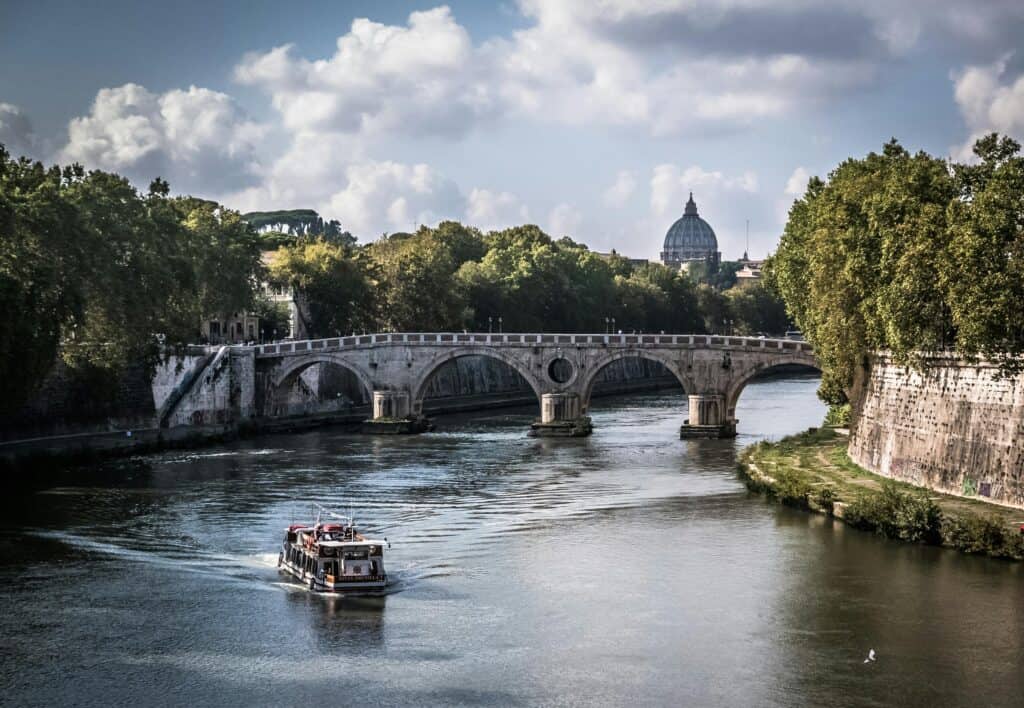
Full disclosure: this post contains affiliate links. If you make a purchase through them, I’ll earn a small commission—at no extra cost to you. But don’t worry, I only recommend stuff I actually use or would use.
Day 1: Historical and Cultural Highlights
Morning
Colosseum & Roman Forum
Start your Roman adventure with the Colosseum, one of the world’s most iconic landmarks. Standing in front of this ancient amphitheater, it’s hard not to be in awe of its grandeur and history. Built nearly 2,000 years ago, the Colosseum hosted everything from gladiator battles to public spectacles.
Make sure to book your tickets in advance to skip the long queues. You can choose between standard entry, guided tours, or combo tickets that include the Roman Forum and Palatine Hill. Trust me, it’s worth it. The Roman Forum is packed with history—once the center of Roman public life, it’s now a beautiful maze of ruins. You’ll need comfortable shoes for all the walking, and don’t forget to carry a water bottle.
Palatine Hill
Next up is Palatine Hill, the legendary birthplace of Rome. According to myth, this is where Romulus founded the city after being raised by a she-wolf. The hill offers some of the best views of the Roman Forum and Circus Maximus, so take a moment to enjoy the scenery.
You’ll also get to explore ruins of ancient palaces and villas, including the House of Augustus and the Flavian Palace. The Farnese Gardens here are a peaceful escape from the bustling city below. If you’re a history lover, the Palatine Museum is worth a stop for its collection of ancient artifacts.
Afternoon
Monument of Victor Emmanuel II – Altar of the Fatherland
After grabbing lunch, head to the massive Monument of Victor Emmanuel II, also called the Altar of the Fatherland. This towering white marble structure honors Italy’s first king and offers sweeping views of Rome from its terraces.
Inside, there’s a museum dedicated to Italian unification, and you can also visit the Tomb of the Unknown Soldier. If you’re into panoramic views, take the elevator to the top for a bird’s-eye view of the city.
Pantheon
The next stop is the Pantheon, one of the best-preserved monuments of ancient Rome. Originally a Roman temple, it’s now a church, and its architecture is nothing short of remarkable. The massive dome with a central oculus lets natural light flood in, creating a dramatic atmosphere inside. The Pantheon is also the final resting place of famous figures, including the artist Raphael.
At only €5 to enter, it’s a must-see. You’ll also find plenty of quaint cafés and gelaterias nearby—perfect for a mid-afternoon treat.
Piazza Navona
Just a short walk from the Pantheon, Piazza Navona is one of the liveliest squares in Rome. Built over the ruins of a Roman stadium, it’s now a beautiful space filled with Baroque fountains, street performers, and outdoor cafés. Bernini’s Fountain of the Four Rivers is the centerpiece, and it’s mesmerizing to watch the water dance around the sculptures.
Grab a gelato, sit on a bench, and enjoy some people-watching. It’s a great spot to take a break before continuing your exploration.
Via dei Fori Imperiali
End your afternoon with a stroll along Via dei Fori Imperiali. This grand avenue links Piazza Venezia with the Colosseum, and on either side, you’ll see the ruins of ancient Rome’s imperial forums. It’s like walking through history, with each ruin telling a story of Rome’s imperial past. Take your time, and let the grandeur of ancient Rome sink in.
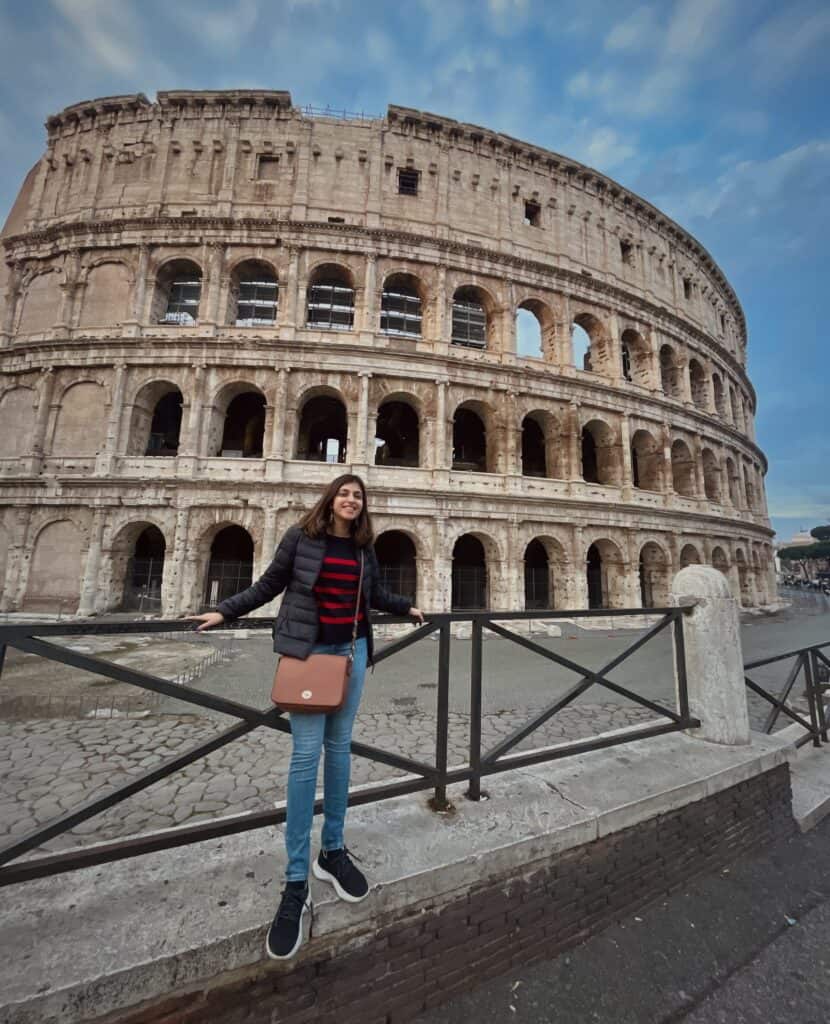
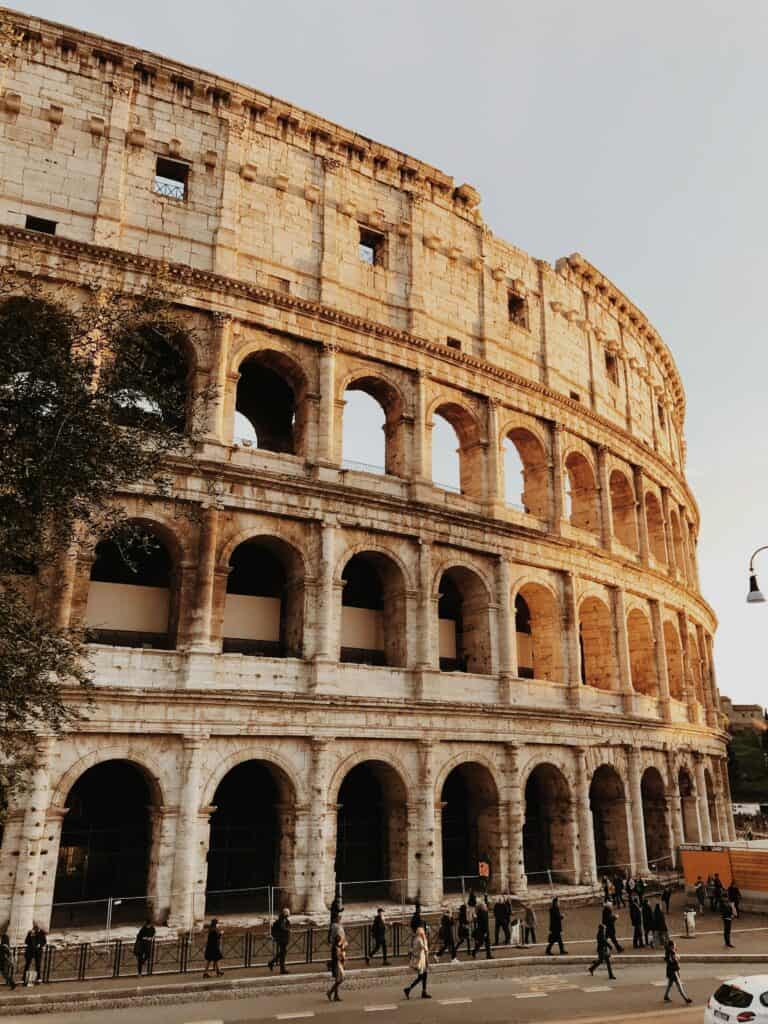
Evening
Spanish Steps
As the sun starts to set, head over to the Spanish Steps. The 135 steps, built in the 18th century, connect Piazza di Spagna at the bottom with the Trinità dei Monti church at the top. It’s a popular spot for both tourists and locals, offering lovely views over Rome, especially at sunset. The area around the steps is also home to some high-end shopping streets like Via dei Condotti, where you’ll find luxury brands such as Gucci and Prada.
Even if you’re not in the mood to shop, the Spanish Steps are perfect for relaxing after a long day of sightseeing. Sit down for a moment, take in the view, and watch the city’s pace slow as day turns to night.
Trevi Fountain
Just a short walk away from the Spanish Steps is the Trevi Fountain, one of the most iconic landmarks in Rome. This Baroque masterpiece is more than just a fountain—it’s a symbol of the city’s elegance and romance. According to legend, if you throw a coin over your left shoulder into the fountain, it ensures your return to Rome. Of course, I couldn’t resist taking part in this tradition!
I highly recommend visiting the Trevi Fountain in the evening, when it’s beautifully illuminated and the crowds are slightly thinner. The gentle glow of the fountain at night gives it an almost magical quality, making it the perfect way to cap off your first day in Rome.
Gelato
No Roman evening is complete without indulging in some authentic gelato. Near the Trevi Fountain, you’ll find Gelateria Della Palma, offering over 150 flavors, or Venchi, famous for its decadent chocolate creations. Whether you’re in the mood for classic pistachio, rich chocolate, or something more adventurous, gelato is the perfect sweet treat to end your evening on a high note.
Dinner: Pizza or Pasta
For dinner, you have endless options. Near the Trevi Fountain, consider dining at Piccolo Buco, known for its wood-fired pizzas. If pasta is more your thing, Osteria dell’Ingegno, near the Spanish Steps, offers a delightful menu of traditional Roman dishes like cacio e pepe and carbonara. Both places provide a cozy, intimate atmosphere—ideal for unwinding after a busy day.
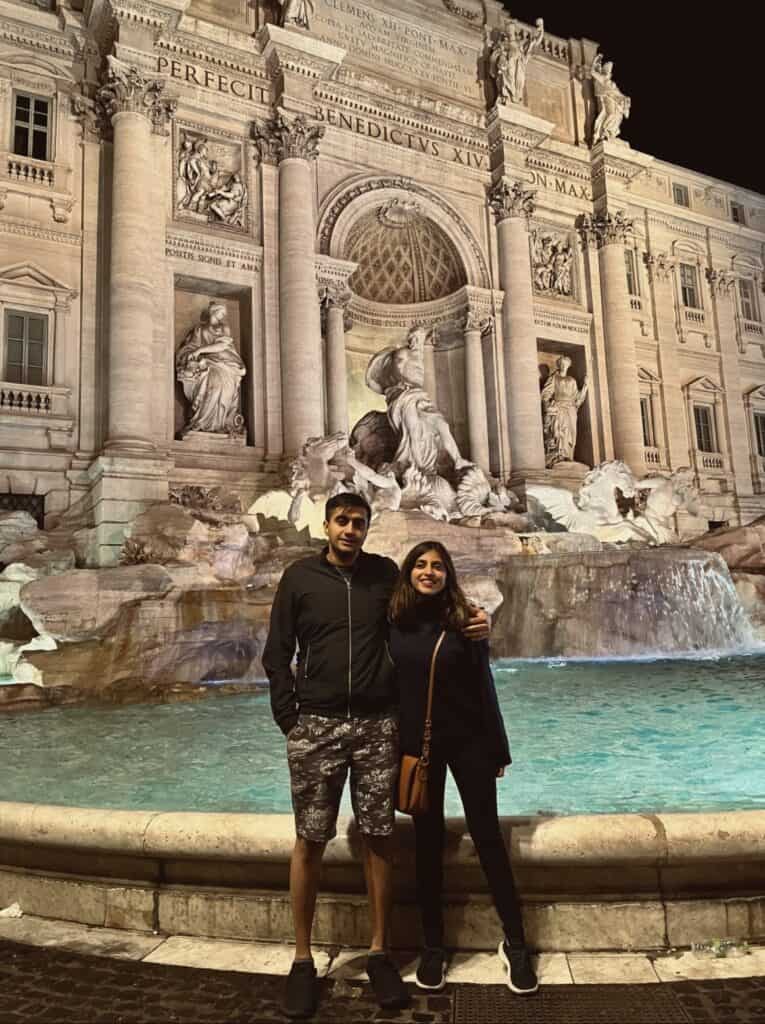
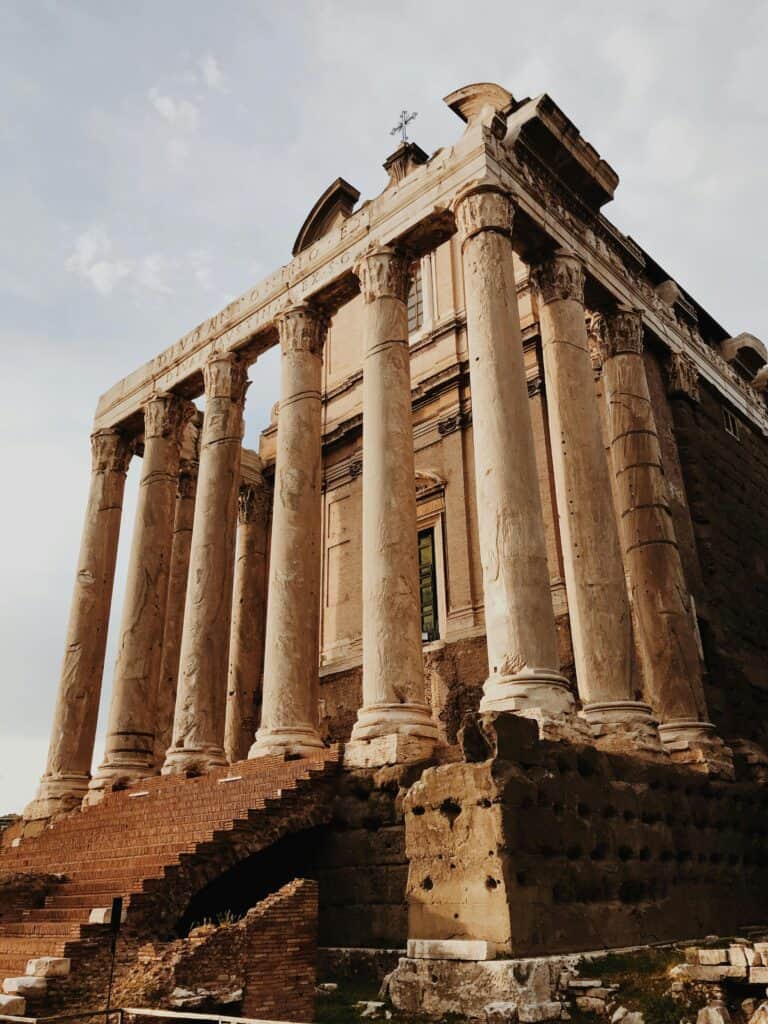
Day 2: Art, Food, and Leisure
Morning
Vatican City Museums and Sistine Chapel
Your second day starts with a trip to Vatican City, the smallest country in the world and the spiritual heart of Catholicism. The Vatican Museums house one of the most impressive art collections in the world, with masterpieces from the Renaissance and beyond. You’ll see works by Raphael, Michelangelo, and Caravaggio, to name a few. The highlight, of course, is the Sistine Chapel, with its world-famous ceiling frescoes by Michelangelo. Be sure to book your tickets in advance to avoid the long queues, and consider opting for an early morning guided tour to beat the crowds.
The sheer scale of the art here can be overwhelming, so take your time, particularly in the Gallery of Maps and Raphael Rooms, where you’ll find some of the most significant pieces in art history.
St. Peter’s Basilica
After the museums, make your way to St. Peter’s Basilica, one of the largest and most awe-inspiring churches in the world. Inside, you’ll find Michelangelo’s stunning Pietà, Bernini’s Baldachin, and one of the most impressive domes ever constructed. If you’re up for it, climb to the top of the dome for breathtaking panoramic views of Vatican City and Rome.
The climb is a bit challenging, with over 500 steps, but the reward at the top is worth every bit of effort. The view from the dome gives you a unique perspective of the city and is the perfect photo opportunity.
Afternoon
Castel Sant’Angelo
After a morning filled with art and history, walk over to Castel Sant’Angelo. This fortress, originally built as Emperor Hadrian’s mausoleum, has a fascinating history. Over the centuries, it has served as a papal residence, a fortress, and even a prison. Today, it’s a museum where you can explore Renaissance art, military memorabilia, and more. The rooftop terrace offers a stunning view of St. Peter’s Basilica and the Tiber River. It’s the perfect spot to snap a few photos or simply enjoy the view.
Lunch in Campo de’ Fiori
For lunch, make your way to Campo de’ Fiori, a lively market square known for its fresh produce, flowers, and local delicacies. Grab a bite at one of the nearby trattorias, like Ristorante Campo de’ Fiori, where you can enjoy traditional Roman dishes like bucatini all’Amatriciana or pizza al taglio. This area is perfect for a relaxed lunch with a side of people-watching.
Coffee at Sant’ Eustachio Caffè
After lunch, head to Sant’ Eustachio Caffè for a pick-me-up. This café is famous for its rich espresso, made using a secret blend of beans and water from an ancient aqueduct. Whether you’re a coffee connoisseur or just in need of a caffeine boost, Sant’ Eustachio offers one of the best coffee experiences in Rome.
Trastevere District
After your coffee break, spend your afternoon exploring the charming Trastevere district. This area is a world apart from the more touristy parts of Rome, offering a glimpse into the city’s authentic, bohemian side. Trastevere is famous for its narrow cobblestone streets, ivy-covered buildings, and vibrant atmosphere. It’s a perfect spot to wander aimlessly, discovering hidden gems like local trattorias, artisan shops, and lively piazzas.
One of the must-see sights in Trastevere is the Basilica of Santa Maria in Trastevere, one of the oldest churches in Rome. Its golden mosaics and serene interior are a peaceful contrast to the bustle outside. Another hidden treasure is the Orto Botanico, Rome’s botanical garden, which is a lovely place to relax and take in some greenery after a busy day of sightseeing.
Trastevere is also known for its lively nightlife, so if you’re in the mood to experience Rome after dark, this is the perfect district to explore in the evening as well.
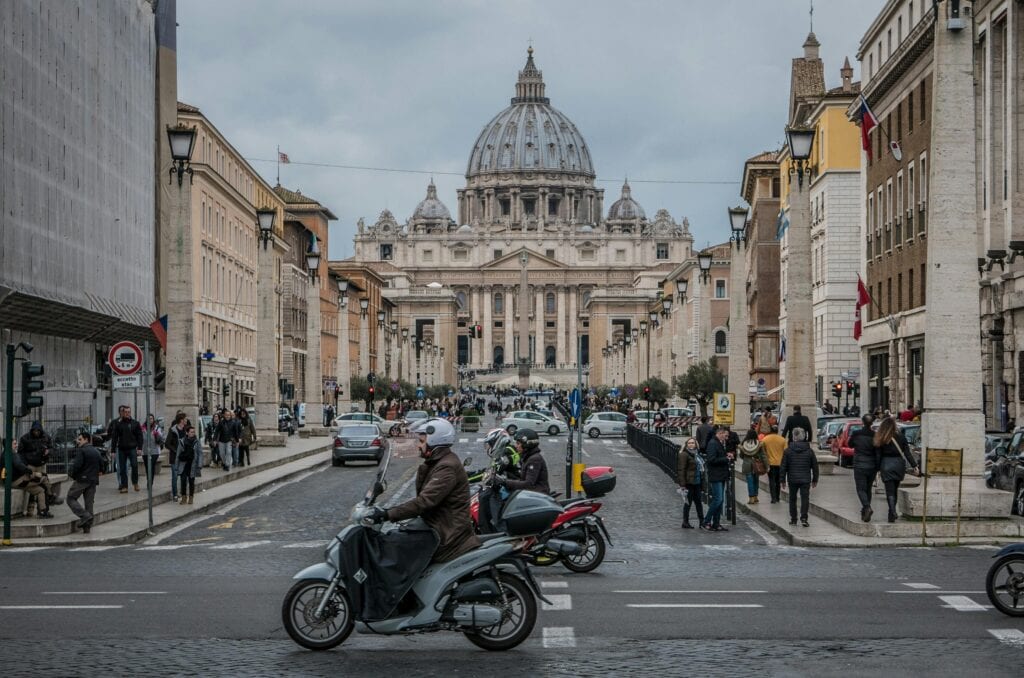
Evening
Cooking Class in Trastevere (Optional)
For a truly immersive experience, consider taking a cooking class in Trastevere. This is a fantastic way to learn how to make authentic Italian dishes like fresh pasta, pizza, and tiramisu, guided by local chefs. Classes typically include a hands-on cooking session followed by a communal meal where you get to enjoy the fruits of your labor, accompanied by plenty of wine, of course. It’s a fun and interactive way to dive into Italian cuisine and take home some new cooking skills.
These classes typically last around 3-4 hours and cost between €70 and €100, depending on the class you choose. While it’s a bit of a splurge, it’s an unforgettable way to connect with Rome’s culinary traditions.
Dinner in Trastevere
If you’re not up for a cooking class, there’s no shortage of excellent dining options in Trastevere. One standout is Da Enzo al 29, a small, cozy trattoria that serves some of the best Roman dishes in the city. Their cacio e pepe and carbonara are local favorites, and the rustic atmosphere makes you feel like you’re dining in someone’s home.
Another option is Osteria der Belli, which offers a twist on traditional Roman cuisine with its Sardinian influence. The seafood dishes here are especially popular, but you can’t go wrong with anything on the menu. For a more laid-back, no-frills experience, try Trattoria Da Augusto, where the food is simple but delicious, and the prices are very reasonable.
Rooftop Bar
After dinner, make your way to a rooftop bar to enjoy one last view of the city at night. Rome has some incredible rooftop terraces where you can sip on Italian wine or a cocktail while taking in the stunning cityscape.
Terrazza Borromini, located near Piazza Navona, offers one of the most breathtaking views in the city, with the Sant’Agnese Church in the foreground and the Vatican off in the distance. Another great option is Les Étoiles, situated atop the Hotel Atlante Star, which provides a panoramic view of St. Peter’s Basilica. Both places offer a perfect setting to unwind after a busy day and reflect on your Roman adventures.

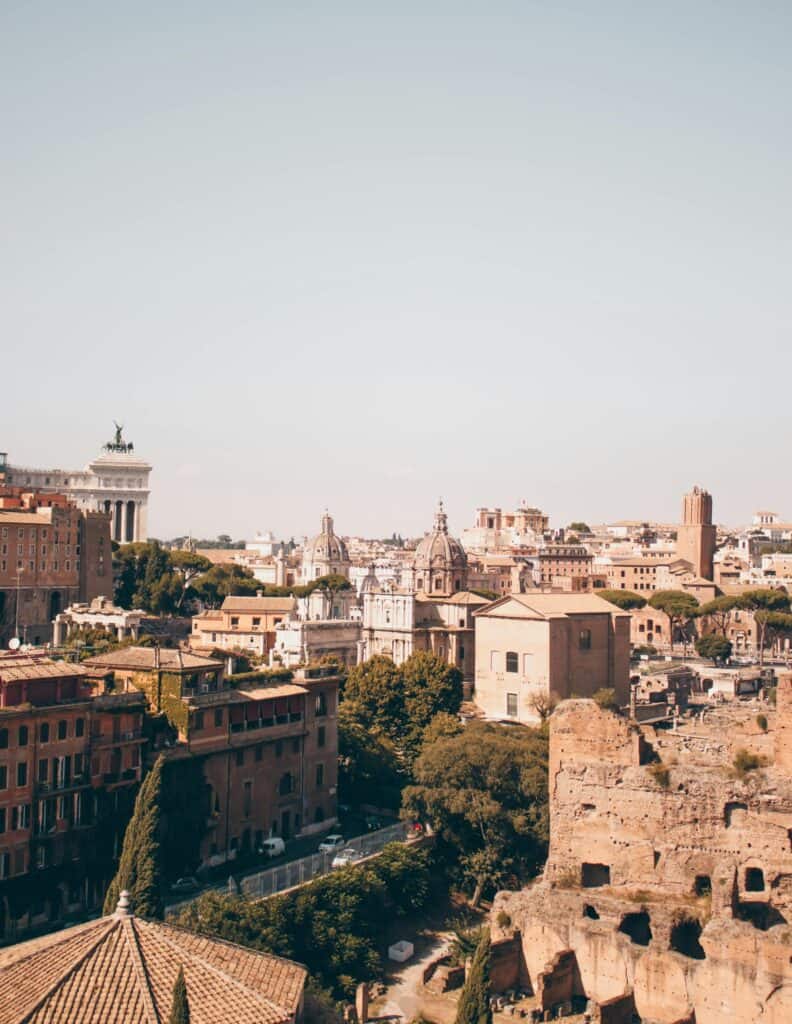
What to Add in Rome if You Have More Than 2 Days
If you’re lucky enough to have more than two days in Rome, there are plenty of other incredible experiences to add to your itinerary. Here are a few suggestions:
Crypt of the Capuchin Friars
Located beneath the Santa Maria della Concezione dei Cappuccini church, the Crypt of the Capuchin Friars is one of the most macabre yet fascinating sites in Rome. The crypt is decorated with the bones of around 4,000 Capuchin monks, arranged in intricate patterns that form altars, chandeliers, and even entire walls. While it’s a bit eerie, it’s also a powerful reminder of the fleeting nature of life. If you have extra time and are in the mood for something unusual, this is a unique place to visit.
Football/Soccer Game
For sports fans, attending a football match in Rome can be an exhilarating experience. Rome is home to two major football teams—AS Roma and SS Lazio—who play at the Stadio Olimpico. The passion and energy of the fans is something you have to witness in person to fully appreciate. Check the schedules in advance, and if your trip coincides with a match, it’s a great way to see another side of Roman culture.
Borghese Gallery and Gardens
If you’re a fan of art and have extra time, a visit to the Borghese Gallery is a must. The gallery is home to a stunning collection of works by Bernini, Caravaggio, Raphael, and other masters of the Renaissance and Baroque periods. Highlights include Bernini’s exquisite sculptures, such as Apollo and Daphne, and Caravaggio’s dramatic paintings. After touring the gallery, take a relaxing stroll through the Villa Borghese Gardens, where you can enjoy the peaceful surroundings and beautiful views of the city.
Walking Tours
One of the best ways to get to know Rome is on foot, and there are plenty of walking tours available to suit every interest. Whether you want a general city tour, a food tour, or a more specific historical walk, there’s something for everyone. I recommend checking out free walking tours led by knowledgeable locals. These tours are a great way to dive deeper into the history and culture of Rome while getting some insider tips along the way.
Day Trips
If you have extra days to spend in Rome, consider taking a day trip to explore the surrounding areas. Pompeii and Naples are popular destinations, especially if you’re a history buff interested in the ancient ruins. Another great option is Tivoli, where you can visit the magnificent Villa d’Este and Hadrian’s Villa. Both are UNESCO World Heritage Sites and offer a glimpse into the grandeur of Roman and Renaissance architecture. If you have even more time, Lake Como is a beautiful option to spend some time unwinding.
Rome Travel Tips
How to Get Around Rome
Rome is a large city, but it’s fairly easy to navigate with a bit of planning. Here are the best ways to get around:
- Public Transportation: Rome’s public transport system includes buses, trams, and the metro. The metro has three lines—A, B, and C—that cover most of the major attractions. You can buy tickets at metro stations, newsstands, or convenience stores, and they must be validated before boarding. A single ticket is valid for 100 minutes and can be used across all modes of transport.
- Walking: The best way to experience Rome is on foot. Many of the city’s main sights, especially in the historic center, are within walking distance of each other. Walking also allows you to stumble upon hidden gems, such as small piazzas, fountains, and charming cafés.
- Taxis: Official taxis in Rome are white and can be found at taxi stands or booked via apps like Free Now. Avoid unlicensed taxis to prevent overcharging. Taxis are a bit pricey but are convenient for getting around late at night or when you’re tired from sightseeing.
- Bike and Scooter Rentals: Another fun way to explore the city is by renting a bike or scooter. Several services offer rentals by the hour or day, allowing you to zip around the city and cover more ground. Lime and Bird are popular scooter rental services that you can easily find in most parts of the city.
Travel Passes: Are They Worth It?
If you plan on visiting multiple attractions and using public transport, consider purchasing a Roma Pass. The Roma Pass offers free entry to two museums or archaeological sites, as well as discounts on others, and includes unlimited public transport for 48 or 72 hours. It’s a great deal if you’re planning on hitting all the major tourist spots.
Another option is the Omnia Card, which combines the benefits of the Roma Pass with skip-the-line access to Vatican City attractions. This card is more expensive, but it includes a hop-on-hop-off bus tour and priority access to popular Vatican sites like the Sistine Chapel and St. Peter’s Basilica.
Safety Tips and Common Scams
Rome is generally a safe city for tourists, but like any major destination, there are a few things you should be aware of to ensure a smooth trip.
- Pickpocketing: Be extra vigilant in crowded areas such as the Colosseum, Termini Station, and around popular tourist spots like the Trevi Fountain. Keep your belongings secure and avoid carrying large amounts of cash. A crossbody bag with zippers or an anti-theft backpack can help deter thieves.
- Scams: Rome has its fair share of tourist scams. One common trick is the “friendship bracelet” scam, where someone offers to tie a bracelet around your wrist for free and then demands money afterward. Another involves fake petitions or unsolicited help with your luggage. Politely decline and walk away to avoid these situations.
- Taxis: Always use official white taxis and avoid unmarked cabs. You can hail them at designated taxi ranks or book through apps like Free Now to ensure a safe ride. Be cautious of drivers who attempt to overcharge or take longer routes.
Emergency contact numbers to keep in mind:
- Police: 112
- Ambulance: 118
- General emergencies: 113
Language Tips for Tourists
While many Romans speak English, especially in tourist-heavy areas, learning a few basic Italian phrases can enhance your experience and show respect for the local culture. Here are a few essentials to get you started:
- Hello/Goodbye: Ciao
- Please/Thank you: Per favore / Grazie
- Yes/No: Sì / No
- Excuse me: Scusi
- Do you speak English?: Parla inglese?
Locals appreciate when visitors make an effort to speak the language, even if it’s just a few words. Plus, it can help you feel more connected to the city.

Where to Stay in Rome
When it comes to finding the perfect spot to stay in Rome, the right neighborhood can make all the difference. Staying in the Centro Storico (Historic City Centre) puts you right in the heart of the action. You can walk to many of the main attractions like the Pantheon, Trevi Fountain, and Piazza Navona. It’s a lively area, full of history, with everything from gelaterias to charming little cafes around every corner.
Another favorite is Trastevere. It’s a bit more laid-back and offers a more local vibe. The narrow, cobblestone streets here are lined with ivy-covered buildings, and the area is known for its incredible food scene. It’s perfect if you want to enjoy a more bohemian atmosphere while still being within easy reach of Rome’s main sights.
For those traveling on a budget, The Beehive is a great option near Termini Station. It’s cozy, eco-friendly, and has a nice communal vibe, which is always a bonus if you like meeting fellow travelers. If you prefer a bit more style, Generator Rome in the Esquilino district is another solid budget pick. It’s modern, comfortable, and still close to the main transport hub.
On the mid-range hotel side, if you want something close to the Spanish Steps, Hotel Condotti is a charming choice with a central location. It’s a great option if you want to be right in the mix of things. For a quieter stay, closer to the Vatican, Hotel Della Conciliazione is comfortable and convenient, especially if you’re planning to spend some time exploring St. Peter’s Basilica and the Vatican Museums.
Each of these places offers something different depending on your style of travel, but no matter where you stay, you’ll be surrounded by Rome’s endless charm. Just remember, the neighborhood you choose will shape your experience in the city—so pick a spot that matches your pace.
Weekend in Rome – FAQs
How much will my Rome trip cost?
The cost of a Rome trip varies based on your travel style. For budget travelers, expect to spend around €50-€100 per day, mid-range travelers can budget €100-€200 per day, while luxury travelers should plan for €200 or more. This includes accommodation, meals, and entrance fees to attractions.
Is tap water safe to drink in Rome?
Yes, tap water in Rome is safe to drink. The city’s water supply comes from natural springs and is regularly tested. You’ll also find public drinking fountains, known as “nasoni,” scattered throughout the city where you can refill your water bottle for free.
What should I pack for a trip to Rome?
When packing for Rome, bring comfortable walking shoes, light clothing for summer, and layers for cooler seasons. Don’t forget sunscreen, a reusable water bottle, and a hat. If you plan to visit churches, pack modest attire that covers your shoulders and knees.
Do I need to book tickets in advance for Rome’s attractions?
Yes, it’s highly recommended to book tickets in advance for popular Rome attractions like the Colosseum, Vatican Museums, and St. Peter’s Basilica. Booking ahead lets you skip long lines and ensures entry, especially during the busy tourist season.
What is the best neighborhood to stay in Rome?
The best neighborhoods to stay in Rome depend on your travel style. Centro Storico is ideal for first-time visitors who want to be close to the main sights, while Trastevere offers a more local, bohemian vibe. Both areas provide easy access to major attractions.
